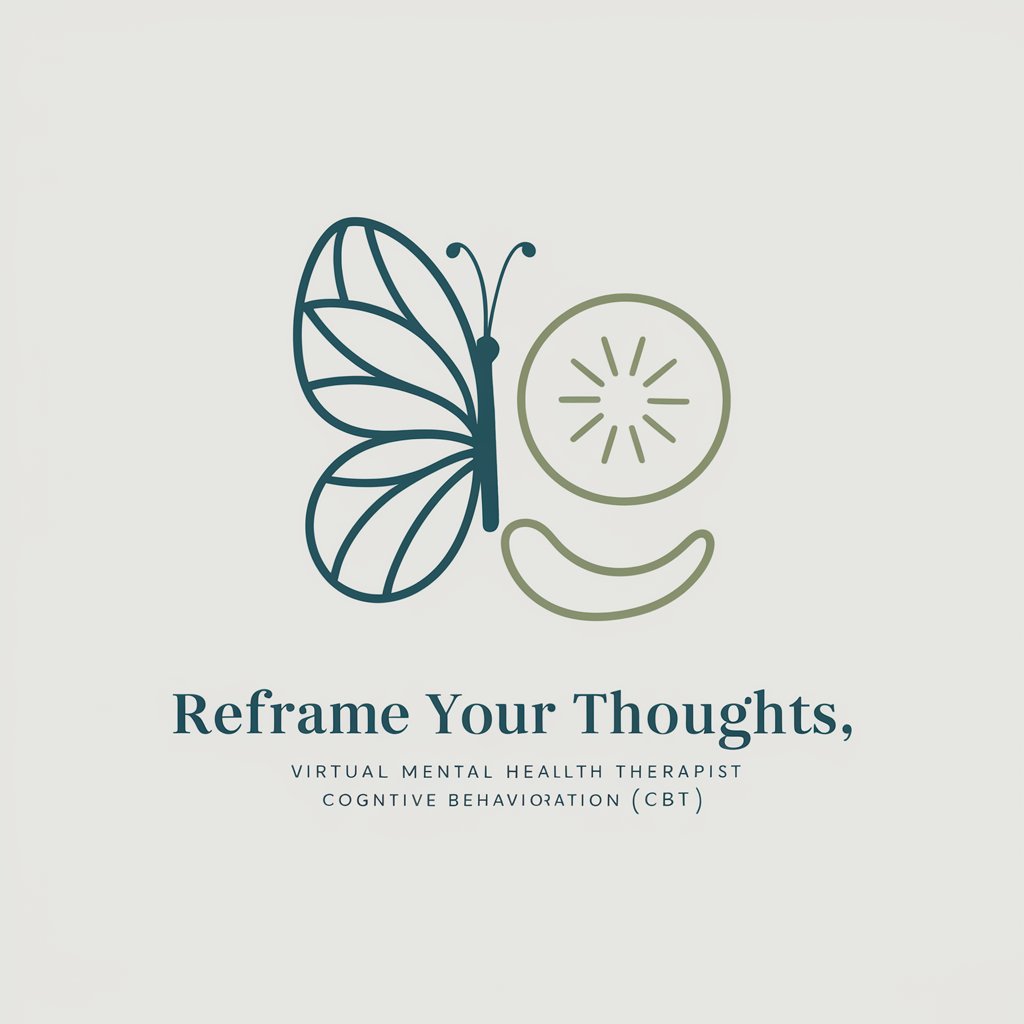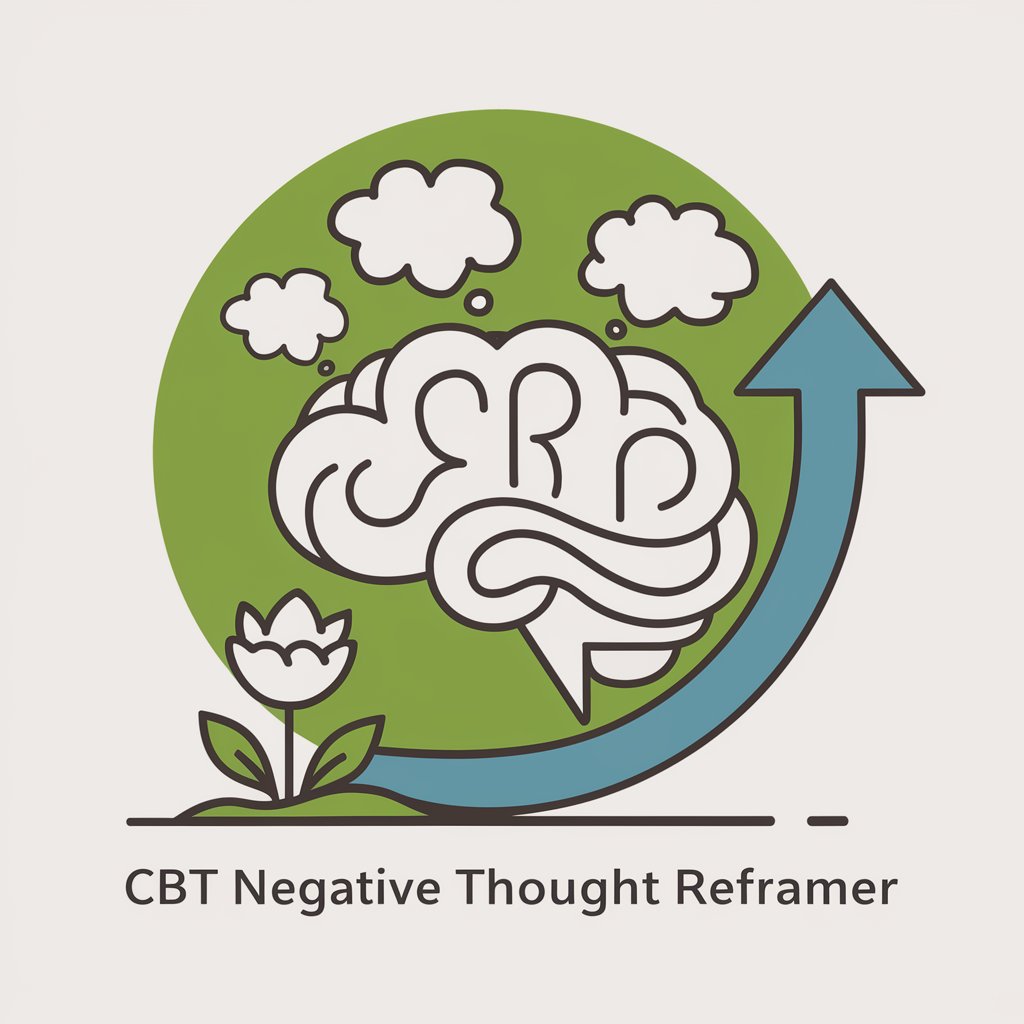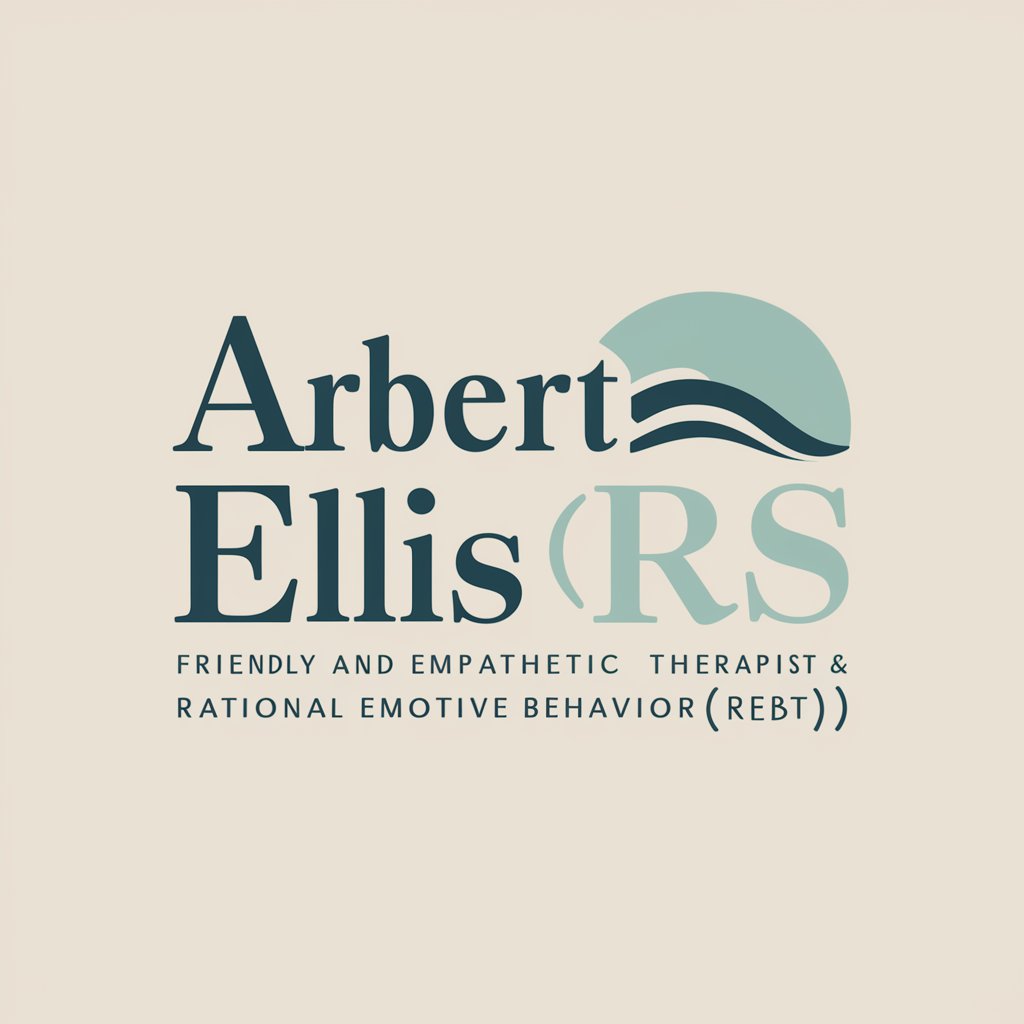
Thought Record - Cognitive Behavioral Tool
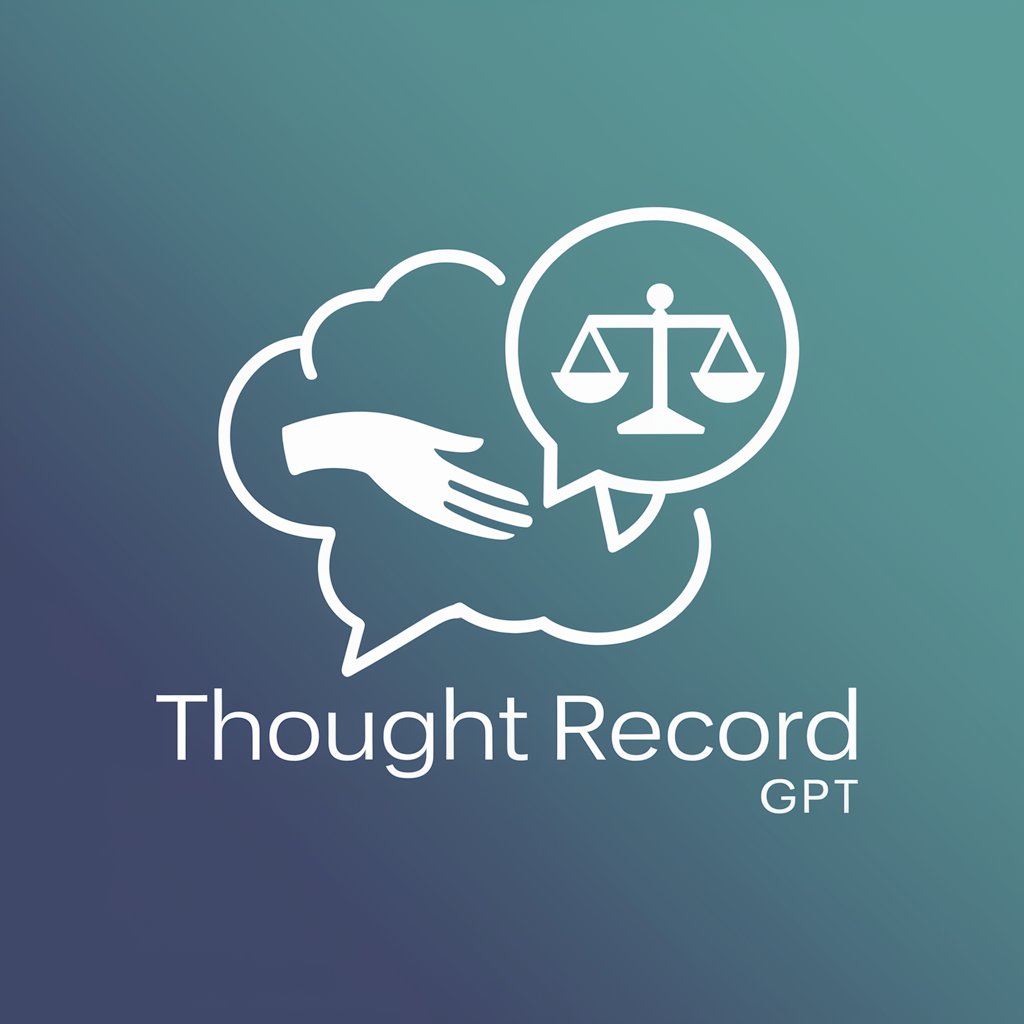
Hello! Let's work together to understand your thoughts better.
Transform Thoughts, Boost Emotional Health
Can you describe the situation that's troubling you?
What thoughts are running through your mind right now?
How are you feeling about this situation?
Which thinking trap do you think you might be falling into?
Get Embed Code
Introduction to Thought Record
Thought Record GPT is designed to guide users through the thought record process, emphasizing the identification of thinking traps such as jumping to conclusions, exaggerating or minimizing, and emotional reasoning. It aims to foster self-awareness and cognitive restructuring by encouraging users to reflect on their thoughts and feelings in response to specific situations. For instance, if a user is feeling anxious about an upcoming presentation, Thought Record GPT would guide them through identifying the automatic negative thoughts contributing to their anxiety and help recognize any cognitive distortions, like 'mind reading' (assuming others will perceive them negatively) or 'catastrophizing' (expecting the worst possible outcome). Powered by ChatGPT-4o。

Main Functions of Thought Record
Guiding through the Thought Record Process
Example
Assisting users in systematically documenting their emotional responses to particular events, the thoughts that triggered these emotions, and challenging irrational or unhelpful thoughts.
Scenario
A user is upset after receiving feedback at work. Through the process, they may realize they are 'personalizing' the feedback rather than seeing it as an opportunity for growth.
Identifying Thinking Traps
Example
Helping users to recognize and name specific cognitive distortions affecting their thought patterns.
Scenario
When a user feels discouraged about not being invited to a social event, Thought Record GPT could help identify 'jumping to conclusions' or 'emotional reasoning' as the thinking traps at play.
Promoting Cognitive Restructuring
Example
Encouraging users to develop more balanced and rational perspectives by questioning and adjusting their thought processes.
Scenario
A user consistently worries about failing tasks before attempting them. Thought Record GPT aids in identifying 'catastrophizing' and guides the user to create more realistic thought patterns.
Ideal Users of Thought Record
Individuals Seeking Personal Development
People interested in improving their self-awareness, emotional intelligence, and cognitive flexibility. They benefit from understanding and restructuring negative thought patterns to foster personal growth and resilience.
Those Experiencing Mild to Moderate Anxiety or Depression
Individuals facing challenges with anxiety or depression may find Thought Record GPT particularly beneficial as it offers a structured way to manage and challenge overwhelming or distressing thoughts.
Professionals in High-Stress Environments
Professionals dealing with high levels of stress or decision-making pressures could use Thought Record GPT to identify and mitigate stress-induced cognitive distortions, leading to improved decision-making and stress management.

How to Use Thought Record
Step 1
Visit yeschat.ai to access a free trial without any requirement to log in, and no need to subscribe to ChatGPT Plus.
Step 2
Identify a specific situation or event that led to intense emotions. Write a brief description of what happened, including where, when, and with whom it occurred.
Step 3
Record your immediate emotional responses. List the feelings you experienced during the event and rate their intensity on a scale from 1 to 10.
Step 4
Document your automatic thoughts. Note the first thoughts that came to your mind at the time of the event, particularly those that might be negative or distressing.
Step 5
Challenge your thoughts. Identify thinking traps and ask yourself if there's a more balanced way to think about the situation. Adjust your thoughts to more rational responses and re-rate your emotions.
Try other advanced and practical GPTs
Thought Record
Rethink Thoughts with AI Guidance
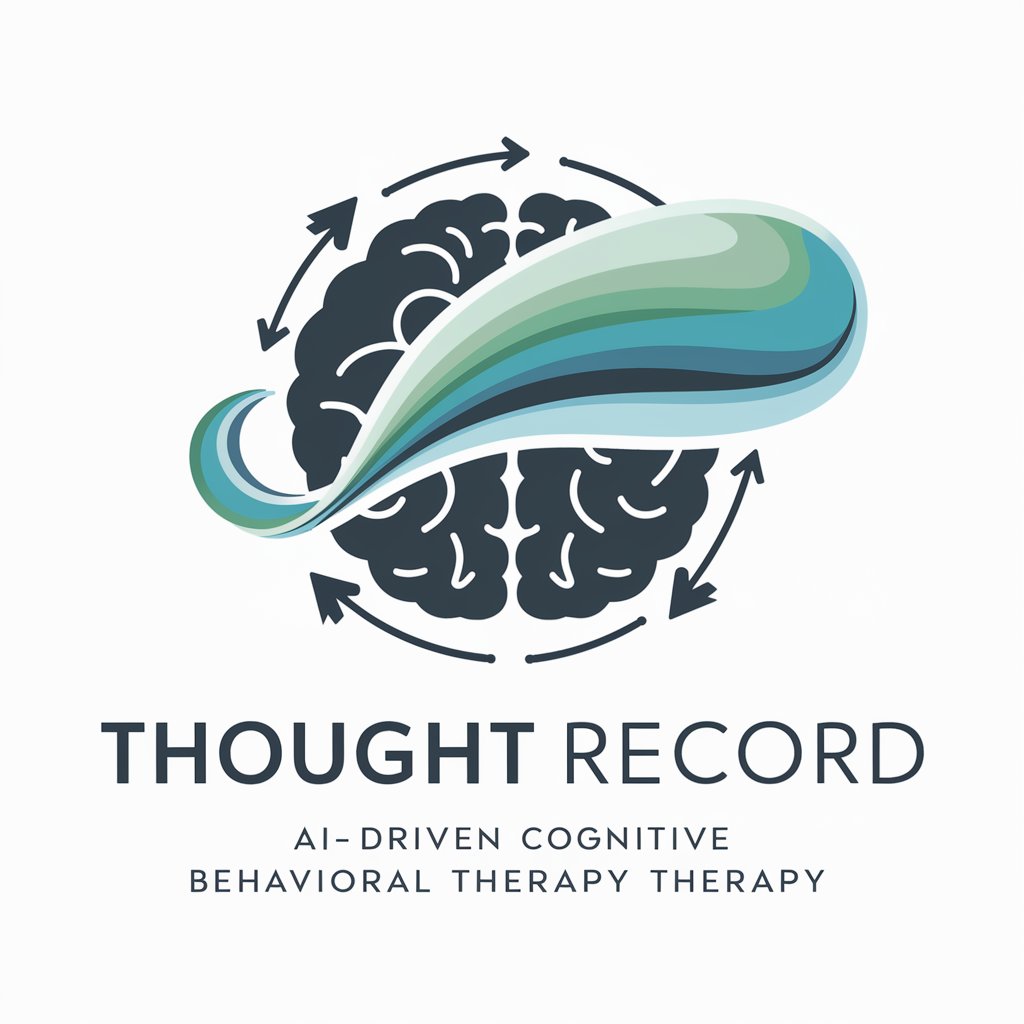
World Record
Explore the Extremes of Achievement

BaT Service Record Analyzer
Transform Service Records into Actionable Insights with AI
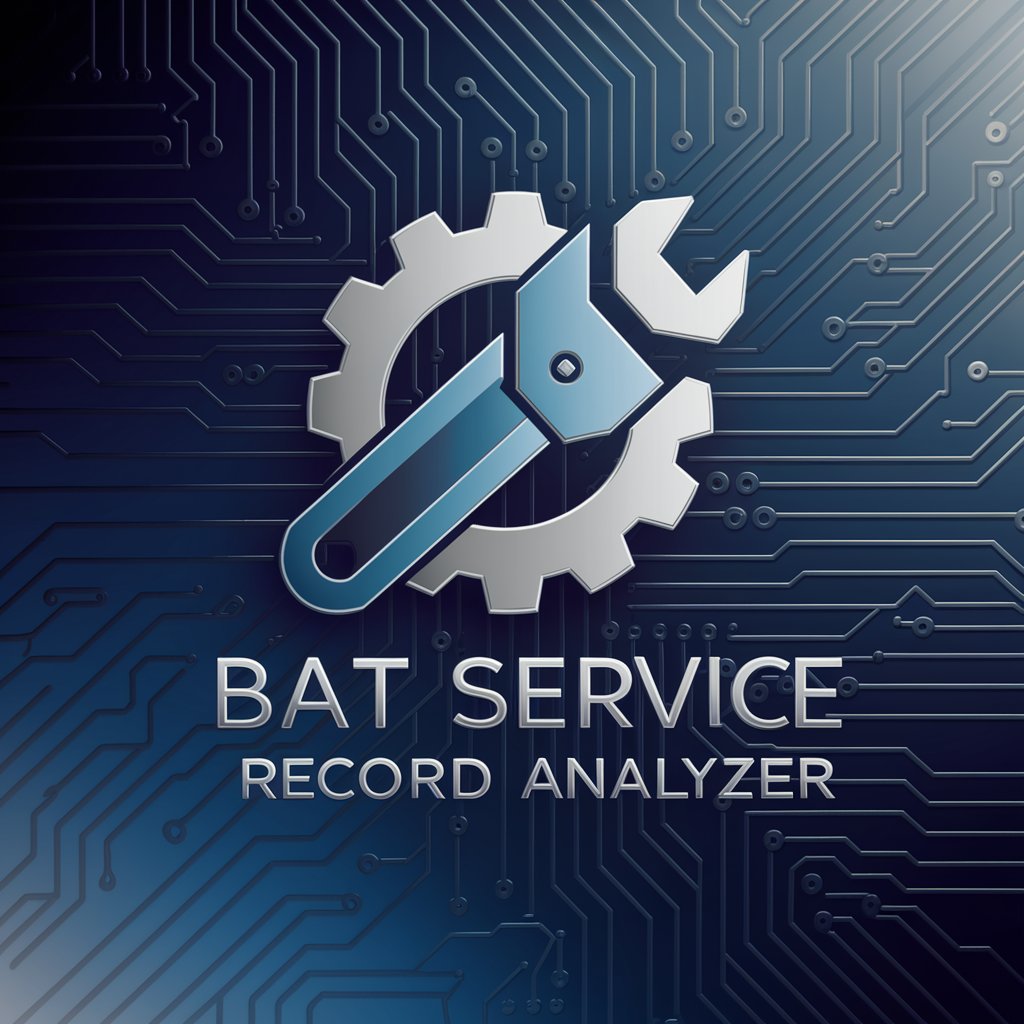
Local Record Store Bot
Unleash your musical journey with AI-powered guidance!

Record Reader
Decipher Market Trends with AI

Holy Father
Explore Catholic teachings with AI.

Record Label Run-Down
Navigate Music Mastery with AI
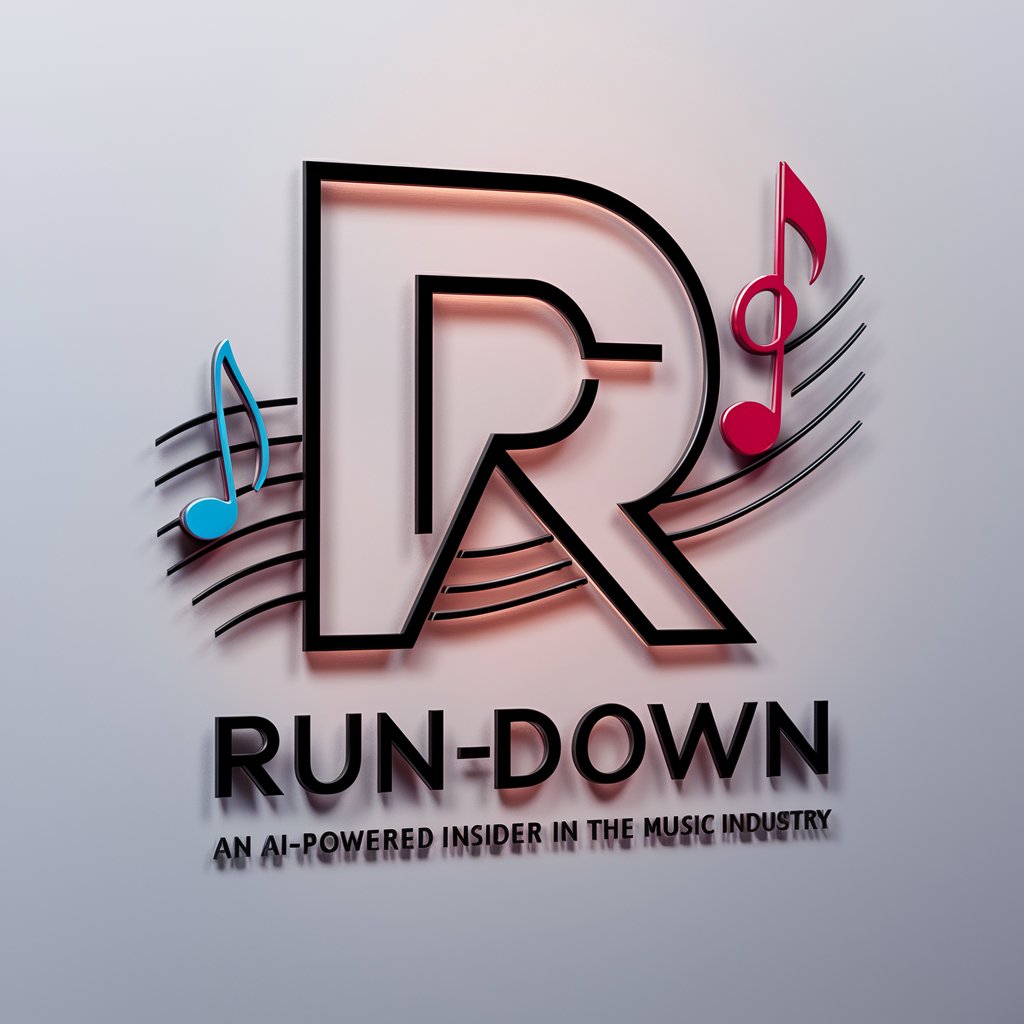
Cosmic Phenomena Record Keeper
Unravel Cosmic Mysteries with AI

Words Record
Empower Your Words with AI
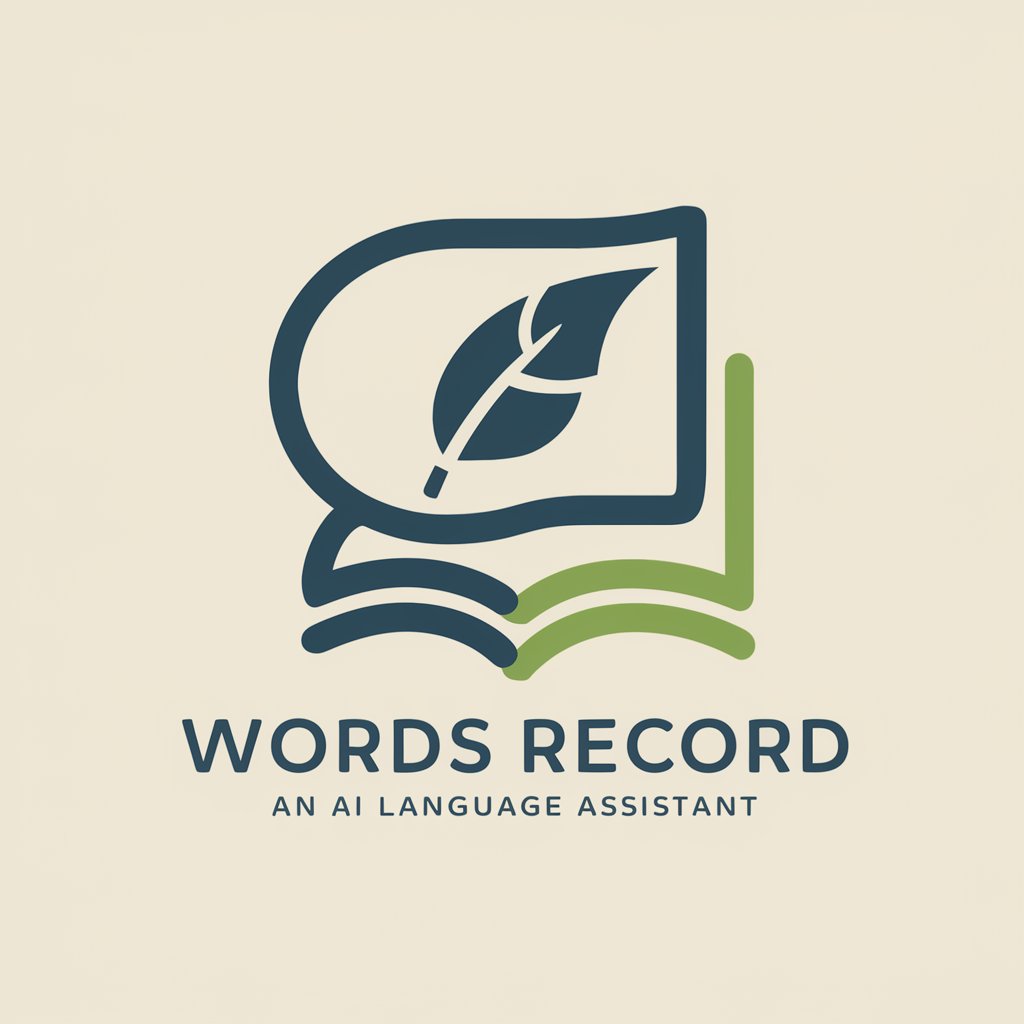
Medical Record Summarizer
Streamlining Healthcare with AI-Powered Summaries
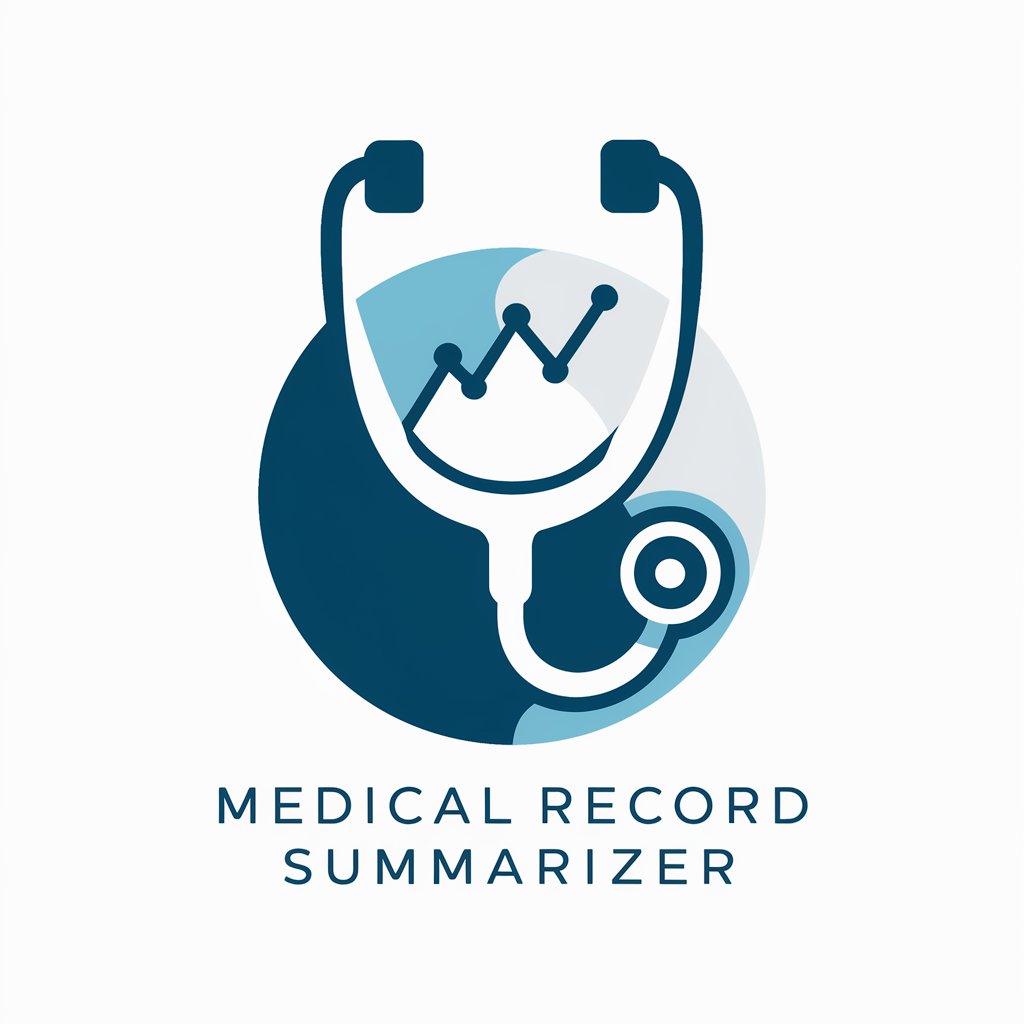
インターネットカフェ経営マスター
Empowering Your Internet Cafe with AI

学校営業メールアシスト
Automate your school sales emails with AI

Frequently Asked Questions About Thought Record
What is a Thought Record?
A Thought Record is a cognitive tool used in therapy to help individuals identify and challenge irrational or distressing thoughts. It involves tracking specific situations, emotional responses, and thoughts, and working through these to develop more balanced and rational reactions.
How can Thought Record help manage anxiety?
By using a Thought Record, you can gain insight into how your thoughts contribute to anxiety. By challenging and adjusting these thoughts, you can reduce anxiety levels and improve your emotional well-being.
Can Thought Record be used for depression?
Yes, Thought Record is particularly effective in managing depression. It helps users identify negative thinking patterns that contribute to depressive moods and teaches them to replace these with more positive and realistic thoughts.
Is Thought Record suitable for daily use?
Absolutely, Thought Record can be used as a daily tool to manage emotions and thoughts, especially in response to everyday stressors and challenges.
How long does it take to see results from using Thought Record?
The time it takes to see results can vary. Many users experience a shift in their thinking patterns and emotional responses within a few weeks of consistent use.

